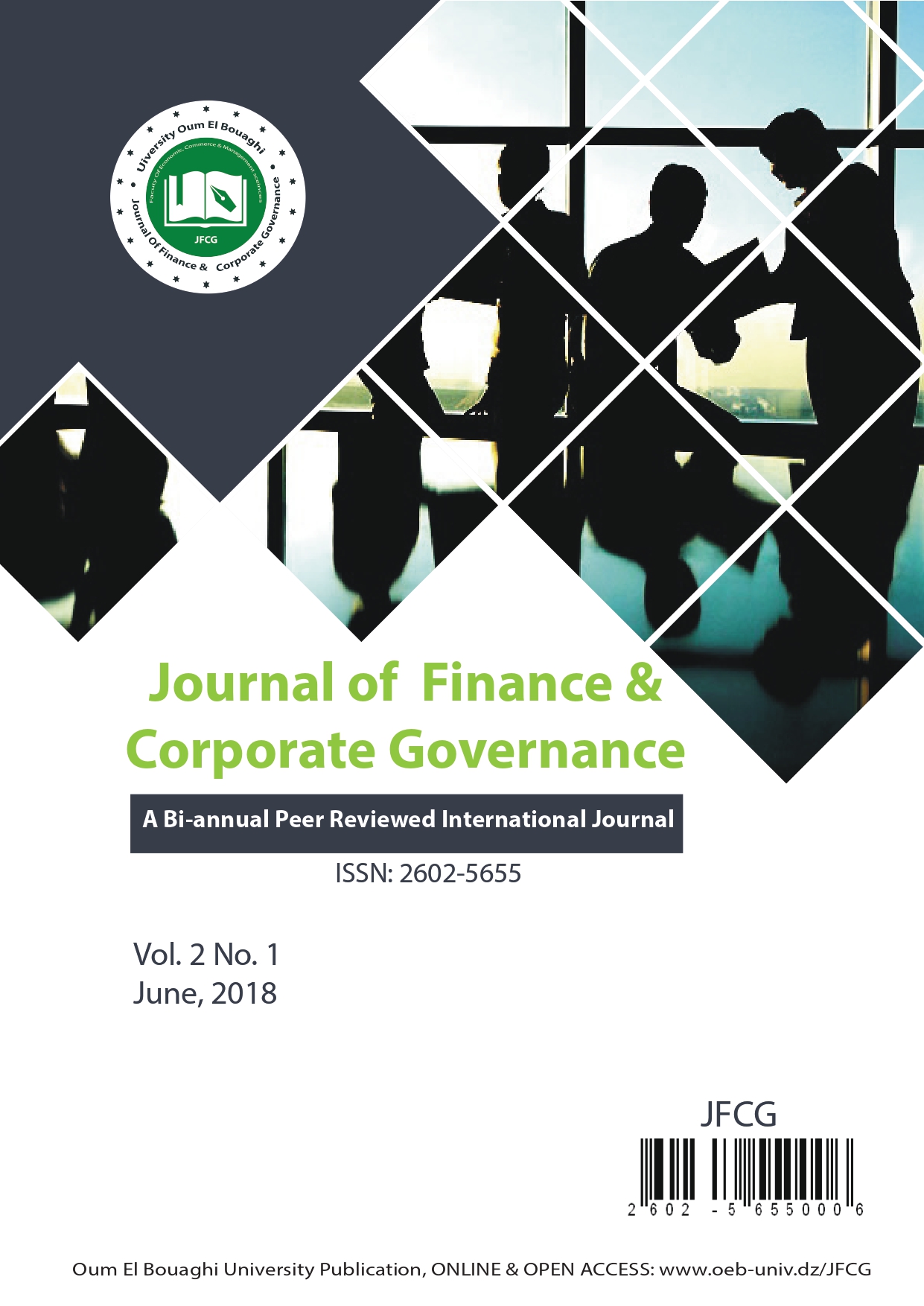Measuring the Financial Performance of Islamic Banks in Selected Countries
DOI:
https://doi.org/10.54960/jfcg.v2i1.15Keywords:
Islamic Finance, Islamic Banks, Riba, Chariaa, PerformanceAbstract
The object of this paper is to study the theory of the finance and the Islamic banks through their concepts and logics of functioning. We focus on the analysis of the banking performances, in particular in terms of profitability which has a big interest to allow the banks to arrest the factors which act on their profitability and of offering them so better control levers of action, control and forecast. What requires a definition of the internal and external determiners of the profitability of Islamic banks? We suggest approaching this question from the specification and from the estimation of a model which integrates at once organizational, exogenous and macro-financial measurable aspects. The empirical analysis was focused on the determiners of the Islamic banking performance. Our study which concerned 10 Islamic banks in 10 various countries showed essentially that the profitability of asset constitutes the main explanatory variable of the banking performance. The performance is positively correlated with CTA and negatively with ASITA. Concerning the externals factors, the profitability is weakly explained by the rates of inflation and growth.
Downloads
References
Abreu, M. et Mendes, V. (2002). “Commercial Bank Interest Margins and Profitability: Evidence from E.U Countries”, Porto Working paper series.
Anghbazo, L. (1997). “Commercial Bank Net Interest Margins, Default Risk, Interest-Rate Risk, and Off-Balance Sheet Banking 1989-2003, Journal of Banking and Finance, Vol.2, pp.155-87.
Avery, Robert, and Allen Berger, (1991). “Risk-Based Capital and Deposit Insurance Reform,” Federal Reserve Bank of Cleveland, Working Paper no. 91-01.
Bashir, A. (1999), ‘Risk and Profitability Measures in Islamic Banks: The Case of Two Sudanese Banks’, Islamic Economic Studies, 6(2), 1-24.
Bashir, A. (2000). “Assessing the Performance of Islamic Banks: Some Evidence from the Middle East 1993-1998”, Papier présenté à la 8ème Conférence de l'Economic Research Forum (ERF), Amman, Jordanie, novembre.
Beckmann, R. (2007). “Profitability of Western European Banking Systems: Panel Evidence on Structural and Cyclical Determinants; Discussion Paper Series N°2: Banking and Financial Studies, No 17/2007.
Ben Naceur, S. (2003). The determinants of the Tunisian banking industry profitability: Panel evidence 1980-2000. Papier présenté à la 11ème Conférence de l'Economic Research Forum (ERF), Marrakech, novembre.
Bourke, P. (1989), ‘Concentration and other determinants of bank profitability in Europe, North America and Australia’, Journal of Banking and Finance, 13, 65- 79.
Dananjaya, I and Kuswanto, A (2015), Influence of External Factors on the Performance through the Network of Small and Medium Enterprises, European Journal of Business and Management. Vol 7 n° 27. pp 38-48.
Demerguç-Kunt, A. et Huizinga, H., (2001). “Financial Structure and Bank Profitability 1990-1997“, in Asli Demirguç-Kunt and Ross Levine (eds.), Financial Structure and Economic Growth: A Cross-Country Comparison of Banks, Markets, and Development, Cambridge, MA: MIT Press.
Haslam A. (1968): "A statistical analysis of the relative profitability of commercial banks", Journal of finance.
Hassan, M.K., Bashir, A., (2003). Determinants of Islamic Banking Profitability. Paper Presented at the Proceedings of the Economic Research Forum 10th Annual Conference, Marakesh-Morocco.
Guru B., Staunton, J. et Balashanmugam, M. (2002). “Determinants of Commercial Bank Profitability in Malaysia 1986-1995“, University Multimedia working papers/2002.
Ittner, C.D., Larcker, D.F., Meyer, M. W. (1997) »Performance, compensation, and the balanced scorecard«, Technical report, University of Pennsylvania. Molyneux, P. & Thornton, J. (1992):"Determinants of European bank profitability: A note", Journal of banking and finance 16.
Ittner, C.D., Larcker, D.F. (1998) »Are nonfinancial measures leading indicators for financial performance? An analysis of customer satisfaction«, Journal of Accounting Research, 36(1), pp. 21-35.
Itnner, C.D., Larcker, D.F. (2000, October 16) »Non-financial Performance Measures: What Works and What Doesn't«, Financial Times' Mastering Management series, Wharton School, Pennsylvania. Franko Milost Int.J.Buss.Mgt.Eco.Res., Vol 4(6),2013,823-828.
Rouabah, A. (2000): "Compétitivité des banques luxembourgeoises, monnaie unique et perspectives stratégiques des acteurs". Thèse de Doctorat es sciences de Gestion, Université de Nancy 2.
Srairi, S., (2009), A comparison of the profitability of Islamic and conventional banks: The case of GCC countries, Bankers, Markets, Investors, 34, pp.45-62.
Srairi, S., Ben Douissa, I., (2014), Factors influencing bank transparency: Case of emerging markets, British Journal of Economics, Management and Trade, 4, pp.523-540.
Schein, E.H. (1971). «The individual, the organization, and the career: A conceptual scheme», The Journal of Applied Behavioral Science, Vol. 7, n°4, p. 401-426.
Short, B. K. (1979). “The Relation Between Commercial Bank Profit Rates and Banking Concentration in Canada, Western Europe and Japan”, Journal of Banking and Finance, Vol. 3.










